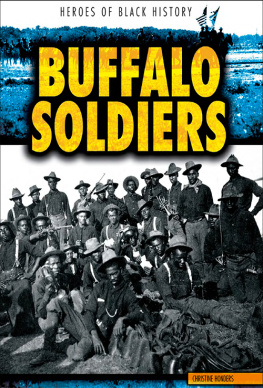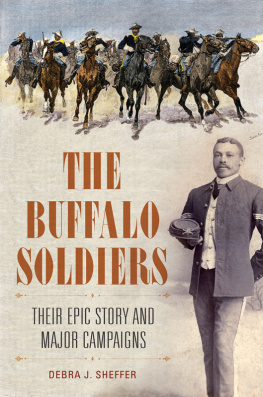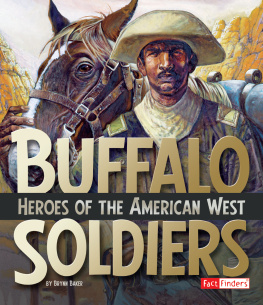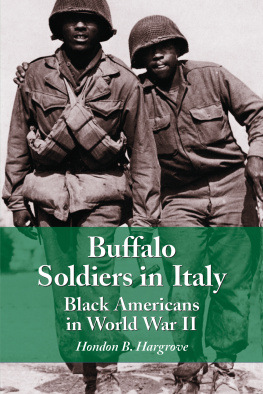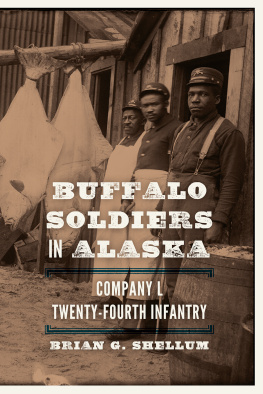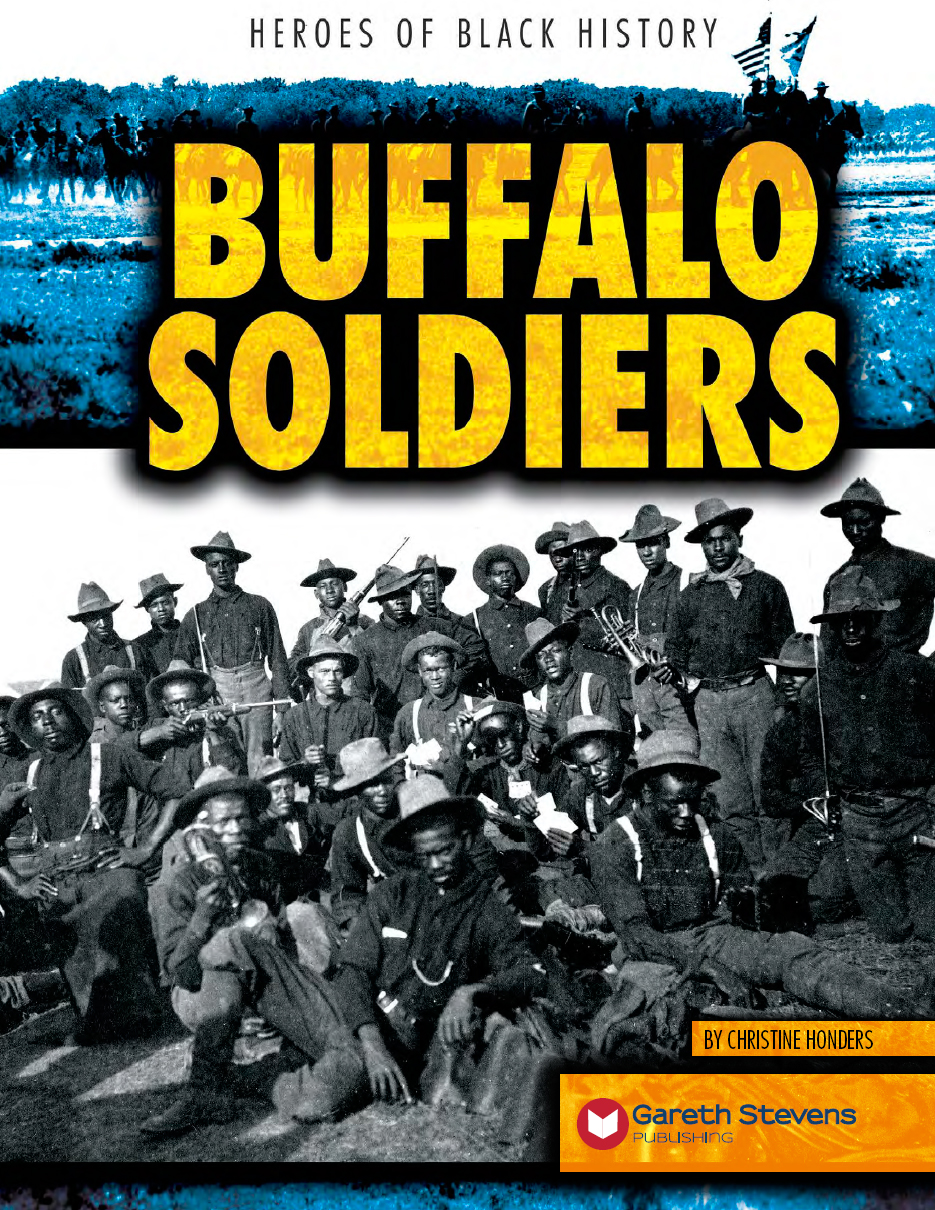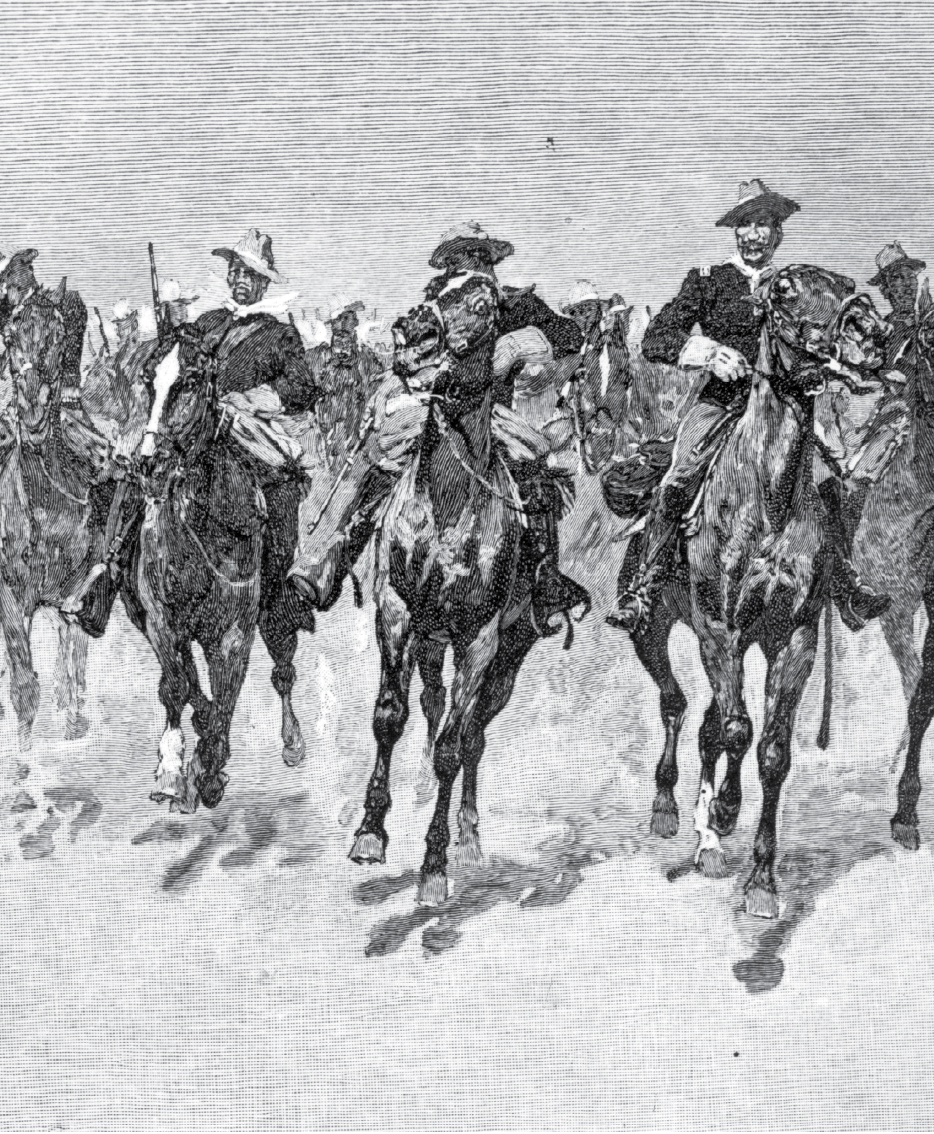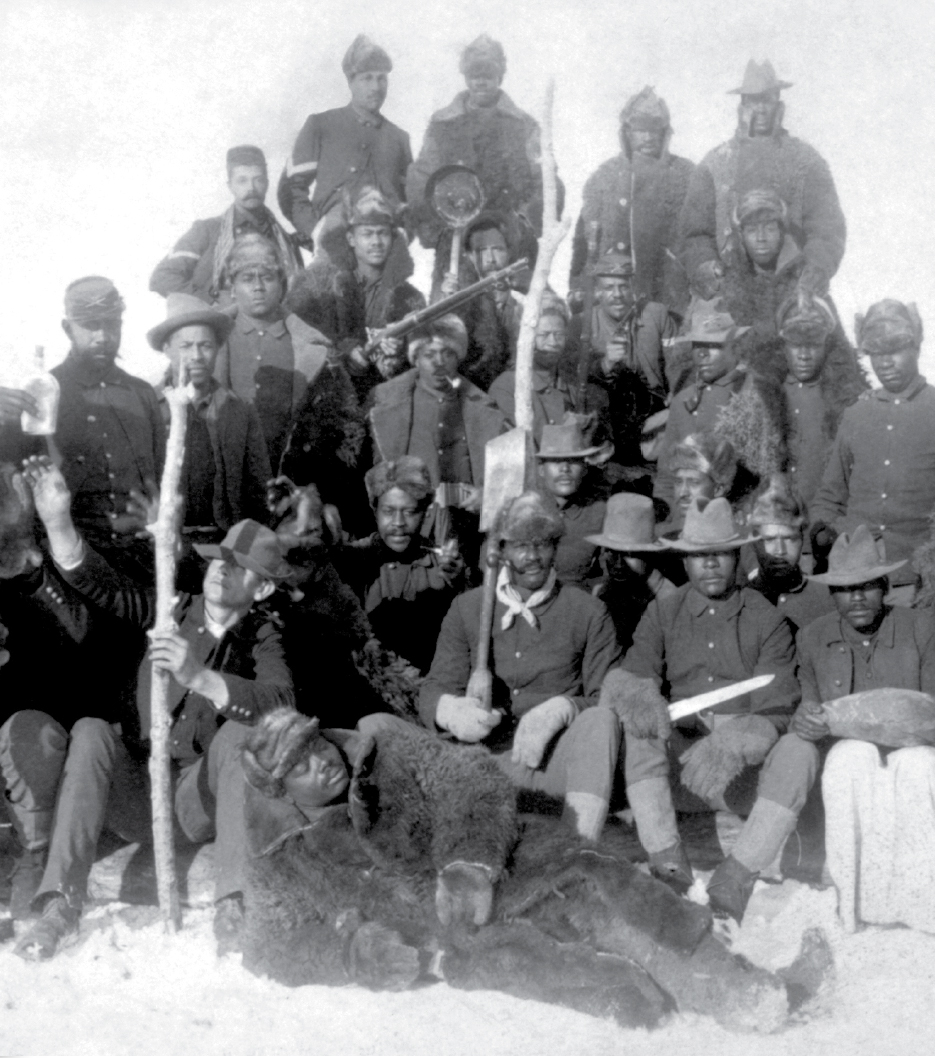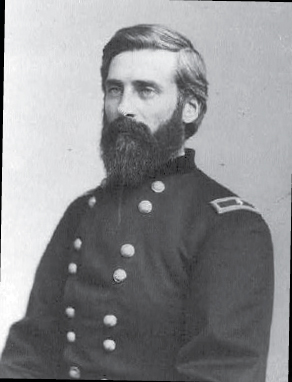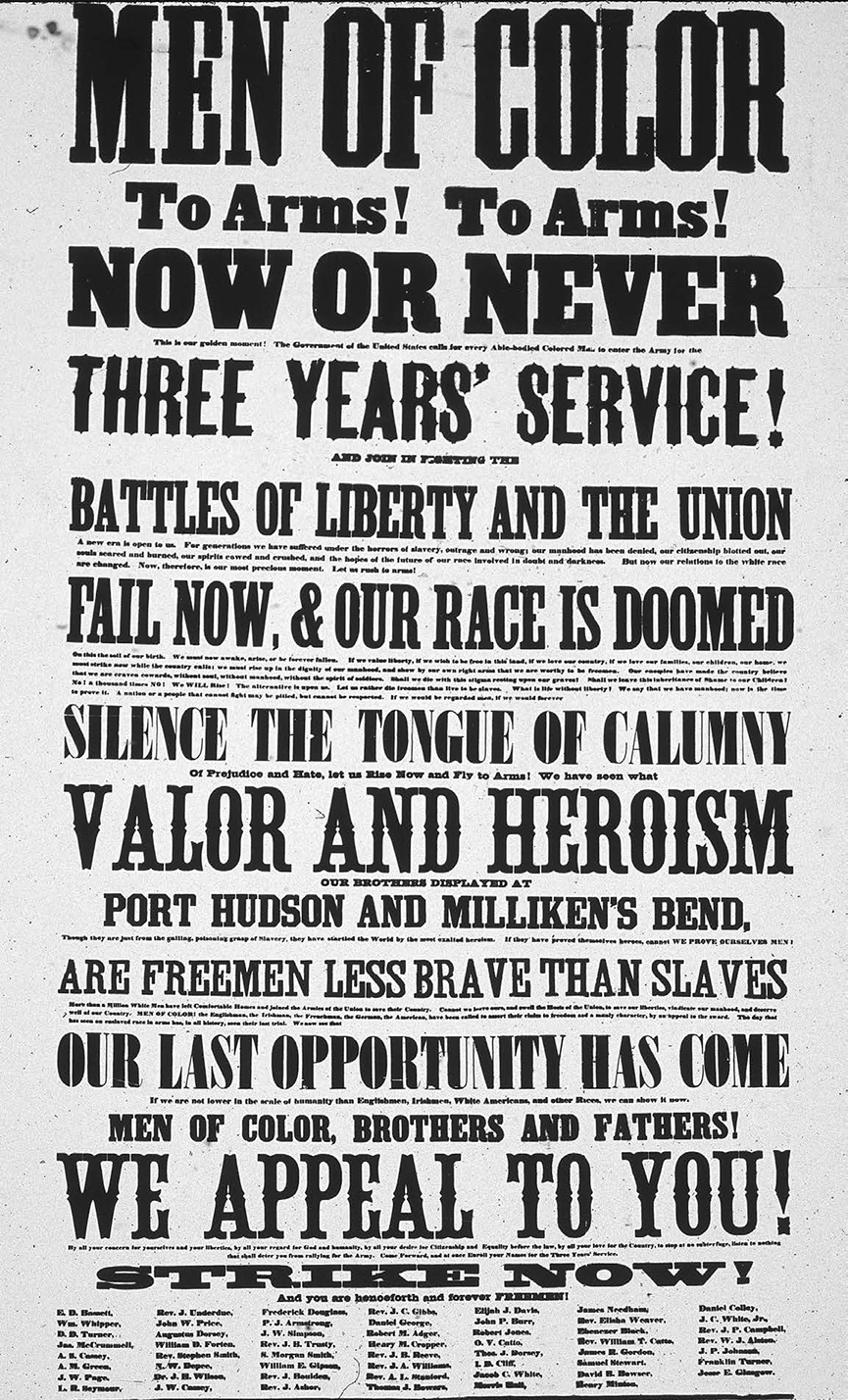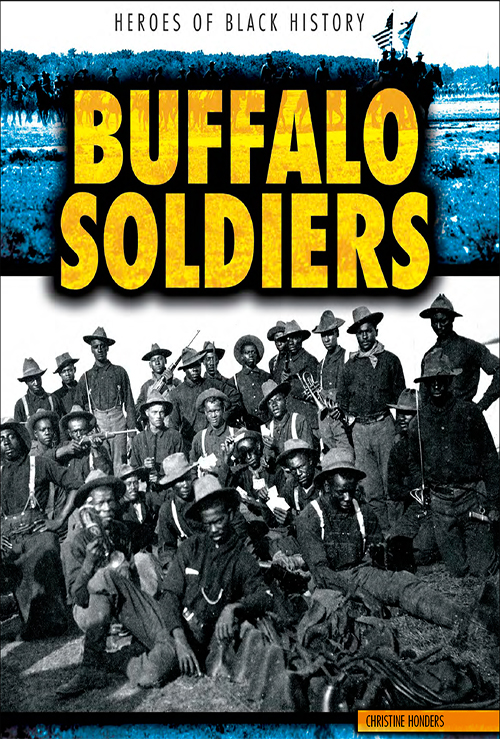
Please visit our website, www.garethstevens.com. For a free color catalog of all our high-quality books, call toll free 1-800-542-2595 or fax 1-877-542-2596.
Library of Congress Cataloging-in-Publication Data
Honders, Christine.
Buffalo soldiers / Christine Honders.
pages cm. (Heroes of black history)
Includes index.
ISBN 978-1-4824-2900-8 (pbk.)
ISBN 978-1-4824-2901-5 (6 pack)
ISBN 978-1-4824-2902-2 (library binding)
1. United States. ArmyAfrican American troopsHistoryJuvenile literature. 2. African American soldiersHistory Juvenile literature. 3. United StatesHistory, MilitaryJuvenile literature. I. Title.
E185.63.H66 2015
973.8dc23
2014047869
First Edition
Published in 2016 by
Gareth Stevens Publishing
111 East 14th Street, Suite 349
New York, NY 10003
Copyright 2016 Gareth Stevens Publishing
Designer: Katelyn E. Reynolds
Editor: Therese Shea
Photo credits: Cover, p. 1 US Army/National Archives/The LIFE Picture Collection/Getty Images; cover, pp. 132 (background image), 28 Signaleer/Wikipedia.com; pp. 5, 11 MPI/Getty Images; p. 7 Chr. Barthelmess/Library of Congress/Wikipedia.com; p. 9 (poster) Kean Collection/Getty Images; p. 9 (Edward Hatch) Civil War Photograph Collection/Library of Congress/Wikipedia.com; p. 13 Mai/Mai/The LIFE Images Collection/Getty Images; p. 15 Hulton Archive/Getty Images; p. 16 Bain News Service/Library of Congress/Wikipedia.com; p. 17 National Archives/ The LIFE Images Collection/Getty Images; p. 19 (top) U.S. Army Military History Institute/NPS; p. 19 (bottom) T. Preiser, Special Collection, Suzzallo Library, University of Washington/NPS; p. 21 Library of Congress; p. 23 Afro American Newspapers/Gado/Getty Images; pp. 25 (top), 27 Time Life Pictures/National Archives/The LIFE Picture Collection/ Getty Images; p. 25 (both bottom) Lucien Edmond/Wikipedia.com.
All rights reserved. No part of this book may be reproduced in any form without permission in writing from the publisher, except by a reviewer.
Printed in the United States of America
CPSIA compliance information: Batch #CS15GS: For further information contact Gareth Stevens, New York, New York at 1-800-542-2595.
CONTENTS
Words in the glossary appear in bold type the first time they are used in the text.
BUFFALO SOLDIERS
Theres a long history of African Americans serving in the US military. Theyve fought in US wars since the conflict that established the country, the American Revolution (17751783). Most black people didnt have their personal freedom, but this didnt stop them from fighting for freedom from the British.
The first official black regiments had the nickname buffalo soldiers. In nearly 85 years of service, buffalo soldiers participated in almost 200 events on the western frontier. They were also sent to Cuba, the Philippines, and Mexico. These men showed great courage by facing dangers in military service as well as facing great prejudice in their own country.
THE FIRST IN TEGRATED US MILITARY?
The Continental army, which fought for the new nation against the British during the American Revolution, had so many black and white troops that a French soldier described them as speckled. Sadly, American military forces wouldnt be nearly as integrated again for another 170 years.
This picture shows buffalo soldiers riding on horseback in the 1880s.
BLACK SOLDIERS IN THE CIVIL WAR
During the American Civil War (18611865), African Americans werent allowed to join the regular US army. However, nearly 180,000 black men fought in volunteer regiments. Many of the black army units had outstanding combat records.
In July 1866, Congress organized six segregated regiments in the US Army, which later became four all-black regiments: the 9th and 10th Cavalries and the 24th and 25th Infantries.
There are several stories about how these soldiers became known as buffalo soldiers. One reports Native Americans thought the soldiers hair looked like buffalo hair. Another says Native Americans gave them this name out of respect, because they were fierce and fought like buffalo.
NO WOMEN ALLOWED
Cathay Williams was the first black female soldier. Women werent allowed to fight in the army, so she used the name William Cathay and never revealed she was female. She joined the army in 1866, claiming she was a 22-year-old cook, and served for 2 years.
Some soldiers in the 25th Infantry are shown here in coats made of buffalo hide. This may be another reason they were called buffalo soldiers.
PREJUDICE IN THE ARMY
Even though African Americans could now join the army, Congress decided their officers had to be white. There was a lot of prejudice against the black community, and some white officers refused to command black soldiers. Colonel Edward Hatch and Colonel Benjamin Grierson were the first to lead the 9th and 10th Cavalries.
At first, the buffalo soldiers were sent to posts in the western states. The army often gave them failing equipment and less ammunition than they needed. They had older, slower horses and poor quality food. However, the buffalo soldiers were more disciplined than other units. They also had the lowest desertion rate in the US Army.
UNCLE SAM WANTS YOU !
Joining the army sounded good to many African American men at that time. Black soldiers were paid $13 a month. This was much more than blacks could expect to make outside of the military. They were also given food, clothing, and a place to live, the same as white soldiers.
Colonel Edward Hatch
A poster urges black men to sign up to fight for the Union during the American Civil War. It warns that a Union defeat meant the black race was doomed.
ON THE WESTERN FRONTIER
In 1867, the buffalo soldiers sent to western states had one main mission: to control the Native Americans of the Great Plains and Southwest. Many tribes were resisting being forced onto reservations, which were lands set aside for them. White settlers were taking over their historical lands. Buffalo soldiers fought in over 125 conflicts with Native American tribes, including the Cheyenne, Apache, and Sioux.
Buffalo soldiers were also responsible for the safety of stagecoaches, mail service, and trains through the West. They built forts, roads, and telegraph lines; mapped areas; and protected American settlers from outlaws and thieves.
A TOUGH JOB
Many buffalo soldiers were born into slavery. Some had relatives who had fled their slave masters and were welcomed into Seminole Indian tribes. This made it very hard for them to force Native Americans back to reservations. Buffalo soldiers understood what it was like not to have freedom.
Next page
